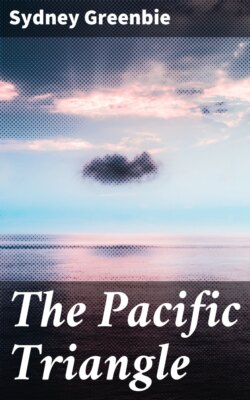Читать книгу The Pacific Triangle - Sydney Greenbie - Страница 17
На сайте Литреса книга снята с продажи.
3
ОглавлениеSullen and less concerned with emotional or spiritual values was the driver of the motor-bus whom we exhumed one day from the heart of Honolulu's "foreign" section. He evidently regarded nature on his route as too great a strain on his brakes, though he, too, must have felt that compensation was meted out to him manifold. For few people come to Hawaii and leave without contributing some small share to his support, as he is the shuttle between Honolulu and Kaneohe, and carries the thread of sheer joy through the eye of that wondrous needle, the Pali.
At the Pali one senses the youth and vigor of our earth. Its peak, piercing the sky, seems on the point of emerging from the sea. It has raised its head above the waters and stands with an air of contempt for loneliness, wrapped in mist, defying the winds. The world seems to fall away from it. It has triumphed. There is none of that withdrawing dignity of Fujiyama, the great man who looks on. The Pali imposes itself upon your consciousness with spectacular gusto, like the villain stamping his way into the very center of the stage and gazing roundabout over a protruding chin.
A SAGE IN A CHINA SHOP AT HONOLULU
THERE ARE ONLY A FEW CHINESE WOMEN IN HAWAII
The palm-trees bow solemnly before changeless winds, in the direction of Honolulu, which lies like an open fan at the foot of the valley near the sea. Color is in action everywhere,—spots of metallic green, of volcanic red, filtered through a screen of marine gray. Honolulu lies below to the rear; Kaneohe, beyond vast fields of pineapple, before us; the sea, wide, open, limitless except for the reaches of the heavens, binding all. And then there is an upward, circular motion,—that of the rising mists drawn by the burning rays of the sun pressing landward and dashing themselves into the valley and falling in sheets of rain upon the earth. Wedged into a gully, as though caught and unable to break away, was a heavy cloud,—but it was being drained of every drop of moisture as a traveler held up by a gang of highway-men.
This circular motion is found not only in inanimate nature. Once, at least, it has whirled the Hawaiians into tragedy. Here, history tells us, Kamehameha I (the fifth from the last of Hawaii's kings) hurled an army of native Oahu islanders over this bluff, back into the source of their being. Without quarter he pressed them on, over this pass; while they, unwilling to yield to capture, chose gladly to dash themselves into the valley below. One is impressed by the striking interplay of emotion with sheer nature. The controlling element which directs both man and mountain seems the same. States and stars alike emerge, crash, and crumble.
We rolled rapidly down into the valley past miles and miles of pineapple fields. Then we came, as it were, to the land's end. Nothing sheer now before us, nothing precipitate. A bit of freshness, of coolness, and an imperceptible tapering off. The sea.
Here at Kaneohe dwelt Arthur Mackaye, brother of the poet, whose name was vaguely known to me. He was slender, bearded, loosely clad, with open collar but not without consciousness and conventionality,—a conventionality in accordance with prescribed notions of freedom. Refreshing, cool as the atmosphere roundabout, distinct from the tropical lusciousness which is the general state of both men and nature in and about Honolulu, the personality of this lone man—this man who had flung everything aside—was a fit complement to the experience of Manoa Valley and the Pali.
WHOA! LET'S HAVE OUR PICTURE TAKEN
We don't know whether we're Hawaiian, Chinese or American, but who cares. Giddap!
FEMININE PROPRIETY
Oriental and Occidental versions
He conducted a small sight-seeing expedition on his own. The proprietor of a number of glass-bottomed launches, he took me over the quiet waters of the reefs. Throwing a black cloth over my head to shield me from the brilliant sky, I gazed down into the still world within the coral reefs. There lay unimaginable peace. What the Pali affords in panorama, the bay at Kaneohe offers in concentrated form. Pink-and-white forests twenty to forty feet deep, with immense cavities and ledges of delicate coral, fringe the shore. Fish of exquisite color move in and out of these giant chambers, as much at home in one as in another. Droll, sleepy sponges, like lumps of porous mud, lie flat against the reefs, waiting for something edible to come their way. Long green sea-worms extend and contract like the tentacles of an octopus in an insatiable search for food.
An unusual silence hangs over the memory of that trip. I cannot recall that the unexpected companion I picked up in Honolulu said anything; the lonely one who furnished the glass-bottomed boat certainly said nothing; the fish and sponges emphasized the tone of silence associated with the experience. But the Pali shrieked; it was the one imposing element that defied stillness. And below it is Honolulu, where silence is not to be found.
